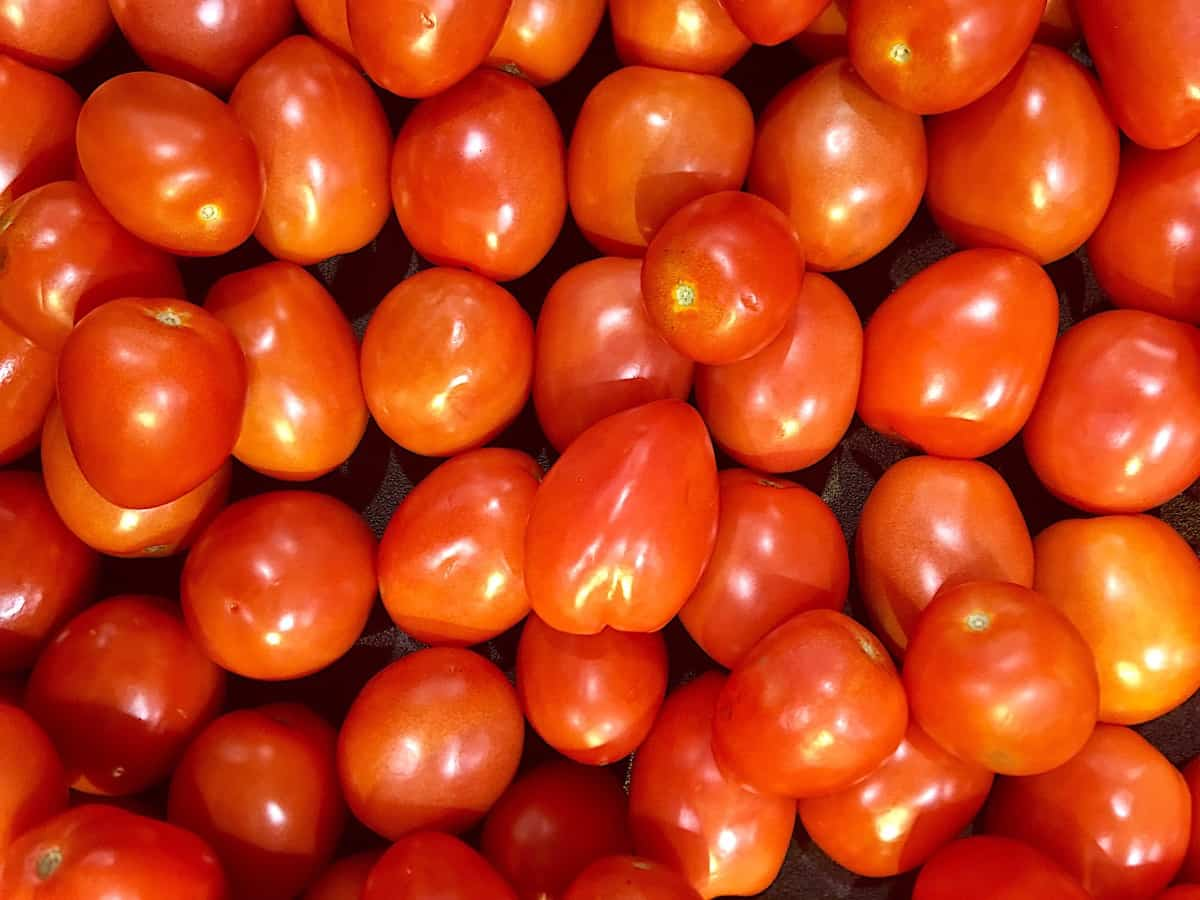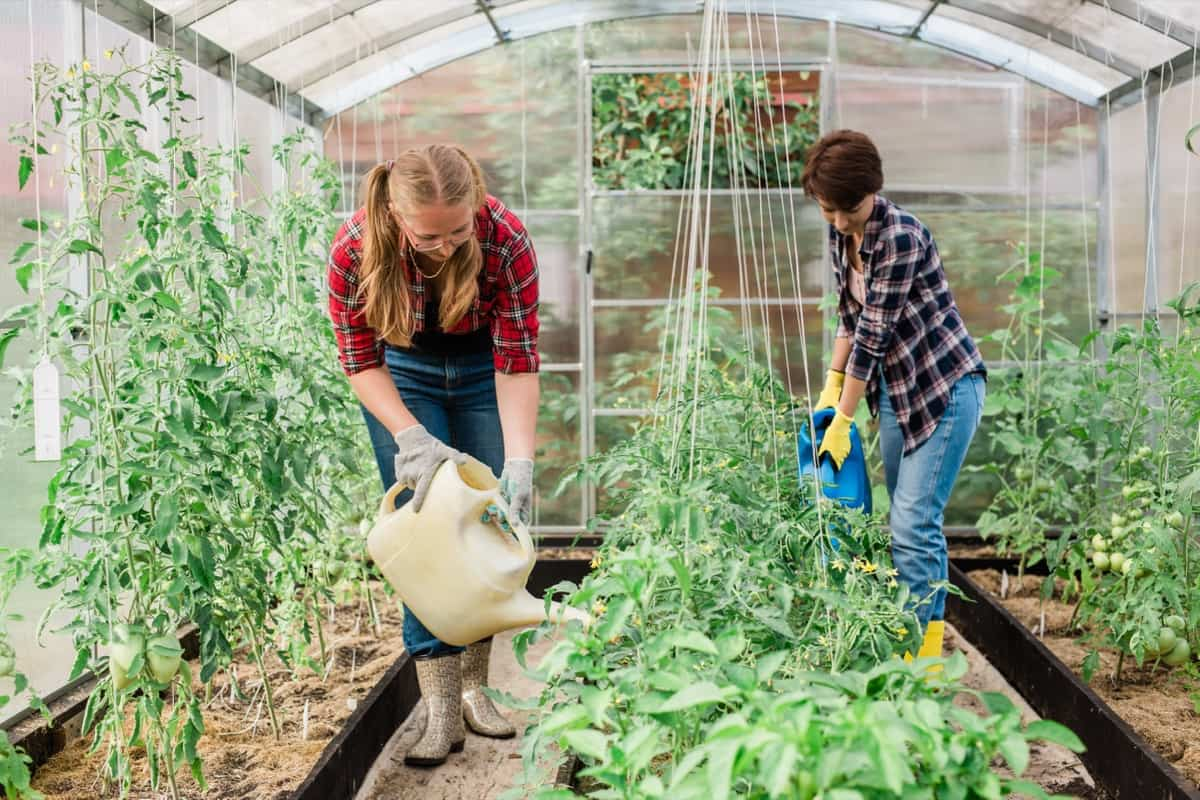Roma tomatoes are popular for their rich flavor and firm texture. Whether you are a seasoned gardener or a beginner, this article will provide step-by-step instructions on growing and caring for Roma tomatoes, from seed to harvest. By following these guidelines, you can ensure a successful harvest of delicious tomatoes right in your backyard.

How to Grow and Care for Roma Tomatoes
Best Soil Conditions for Growing Roma Tomatoes
Roma tomatoes prefer well-draining soil. Ensure the soil has good drainage by adding organic matter such as vermicompost or well-aged animal manure. The ideal pH level for growing Roma tomatoes is between 6.0 and 7.0. Test the soil’s pH level using a soil testing kit and make necessary adjustments by adding lime to increase pH or sulfur to decrease pH. Ensure the soil temperature is at least 15°C before planting. If the soil is too cold, consider using black plastic mulch to warm it up.
Choosing the Right Roma Tomato Variety
- San Marzano: San Marzano tomatoes are known for their rich flavor and meaty texture. They are ideal for making sauces, pastes, and canning.
- Amish Paste: These tomatoes are large, sweet, and low seed count. They are perfect for slicing, canning, and drying.
- Principe Borghese: Principe Borghese is a great option for sun-drying. These small, oval-shaped tomatoes have a sweet and intense flavor when dried.
- Italian Roma: Italian Roma tomatoes are a classic choice. They have firm flesh, mild flavor and are perfect for sauces, canning, and salads.
Starting Roma Tomato Seeds Indoors
- The first step in how to grow Roma tomatoes from seed, select a container, such as a seed tray or individual pots with drainage holes to prevent waterlogging.
- Next, fill the containers with a well-draining seed starting mix. This mix should be lightweight and sterile to provide a suitable environment for the seeds.
- Once the containers are prepared, place one or two seeds in each container, ensuring they are evenly spaced.
- Cover the tomato seeds with a thin layer of the starting mix, approximately 1/4 inch deep. Gently press the mix down to ensure good seed-to-soil contact.
- After sowing the seeds, water the containers thoroughly but gently. Avoid overwatering, as it leads to fungal diseases.
- Move your containers in a warm, bright spot like a south-facing windowsill or under grow lights. Maintain a temperature of around 21-27°C to facilitate germination.
In case you missed it: Time to Plant Tomatoes in USDA Hardiness Zones: Growing Season, Calendar for Indoor and Outdoor

Transplanting Roma Tomato Seedlings
- Once the Roma tomato seedlings have developed their first true leaves, it’s time to transplant them into larger containers or the garden.
- Before transplanting, prepare the new containers or garden bed by adding a layer of compost or well-rotted manure for added nutrients.
- Carefully remove the tomato seedlings from their original containers, ensuring you don’t damage the delicate roots. Gently tease the roots apart if they appear tangled.
- Dig a hole in the new container or garden bed deep enough to accommodate the seedling’s roots and base.
- Place the seedling in the hole, ensuring the soil level matches the level it was at in its original container.
- Firmly press the soil around the seedling to eliminate any air pockets. Water the newly transplanted seedlings thoroughly to settle the soil and provide moisture.
- When you have questions like when to plant Roma tomatoes, planting is best done after the last spring frost, but the exact timing depends on your local climate.
Roma Tomato Spacing Requirements
The spacing varies depending on the variety you are growing wheather determinate or indeterminate. You should leave 12-24 inches between determinate varieties and 2-3 feet between indeterminate varieties. A distance of four to six feet should be maintained between rows.
Providing Adequate Sunlight for Roma Tomatoes
Sunlight is a crucial factor in the successful growth and development of Roma tomatoes. These plants require a minimum of six to eight hours of direct sunlight daily. It is important to choose a location for your tomato plants where they can receive ample sunlight throughout the day. This can be achieved by placing them in an area not obstructed by buildings or trees that may cast shadows. You can also consider using reflective materials to redirect sunlight toward the plants, ensuring they receive the optimal amount of light.
Watering Requirements for Roma Tomatoes
plants thrive in well-drained soil; water them consistently to keep the soil moist. Watering frequency varies based on factors like climate, soil type, and plant size. As a general guideline, Roma tomatoes typically require about one to two inches of water per week from rainfall or irrigation. Avoid overwatering, as it leads to root rot and other water-related issues. Regularly monitor the soil’s moisture level and adjust your watering schedule accordingly.
Fertilizing Roma Tomato Plants
Roma tomato plants benefit from regular fertilization for optimal growth and fruit production. Before planting, incorporate well-balanced organic matter or compost into the soil to provide essential nutrients. Once the plants are established, you can continue fertilizing them throughout the growing season.
In case you missed it: From Seed to Harvest: How to Grow and Care for Sungold Tomatoes

Use a balanced fertilizer with equal percentages of essential elements like nitrogen, phosphorus, and potassium. Taking care not to over-fertilize can lead to foliage growth instead of fruit production. Watering the plants after fertilizing is also important to help the nutrients penetrate the soil.
Pruning and Supporting Roma Tomato Plants
Pruning Roma tomato plants are essential practices that help maintain plant health, promote airflow, and maximize fruit production. As the plants grow, remove any suckers that emerge in the leaf axils. By removing these suckers, you channel the plant’s energy towards fruit production rather than excessive vegetative growth.
Additionally, supporting the plants with stakes or cages helps prevent them from sprawling on the ground, reducing the risk of disease and making it easier to harvest the fruit. To stake Roma tomato plants, place the bamboo stake as close to the plant as possible, deep enough, and then tie the stem to the stake. Just tie it above a leaf branch to prevent it from sliding down the stem.
Managing Pests and Diseases in Roma Tomatoes
Maintain good garden hygiene and regularly inspect your plants for any signs of trouble. Common pests affecting Roma tomatoes include aphids, hornworms, and whiteflies. Natural solutions such as introducing beneficial insects or using organic insecticides can help control these pests.
Diseases like early blight and blossom end rot can also affect Roma tomatoes. Proper watering practices, adequate spacing between plants, and regular crop rotation can help prevent or minimize the impact of these diseases. Consult with a local garden center or extension service for specific pest and disease management recommendations if necessary.
Harvesting and Storing Roma Tomatoes
How long Roma tomatoes take to grow may vary based on the Roma tomato variety you are growing. Generally, it will be around 70-80 days. Roma tomatoes are ready to be harvested when they reach a deep red color and are firm to the touch. Gently twist or cut the fruit from the stem using clean garden shears. If you plan to use the tomatoes within a few days, store them at room temperature, away from direct sunlight. To extend their shelf life, store them in a cool (12-21°C), dry place, such as a basement or pantry.
In case you missed it: How to Grow and Care for Green Zebra Tomatoes: A Guide to Planting to Harvest

Conclusion
Growing and caring for Roma tomatoes can be a rewarding experience. Following these steps, you can cultivate healthy plants and enjoy a bountiful harvest of delicious Roma tomatoes. Remember to provide adequate care, monitor for pests and diseases, and savor the flavorful fruits of your labor. Happy gardening!
- Feed Your Flock for Less: Top 10 Tips to Save on Chicken Feed
- Ultimate Guide to Ossabaw Island Hog: Breeding, Raising, Diet, and Care
- Hatching Answers: The Top 10 Reasons Your Chickens Aren’t Laying Eggs
- Eggs and Economics: Breaking Down the Cost of Raising Backyard Chickens
- Defend Your Greens: Proven Methods to Keep Iguanas Out of Your Garden
- Ultimate Guide to Cinnamon Queen Chicken: A Comprehensive Guide for Beginners
- Ultimate Guide to California Tan Chicken: Breeding, Raising, Diet, Egg-Production and Care
- Ultimate Guide to Marsh Daisy Chicken: Breeding, Raising, Diet, and Care
- 10 Types of Chicken Farming Businesses You Can Start for Profits